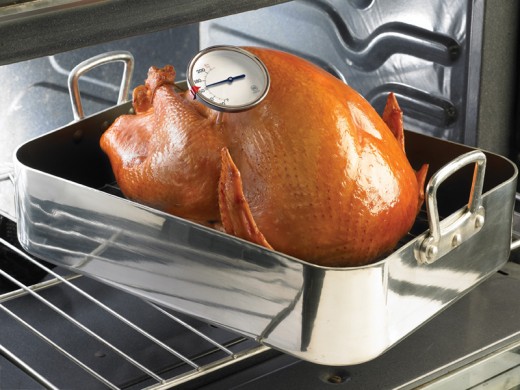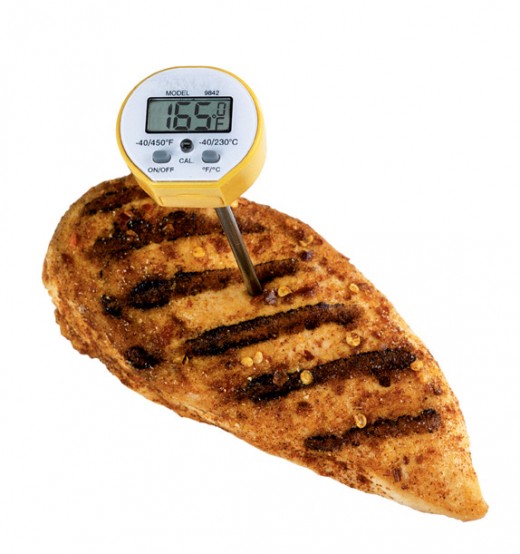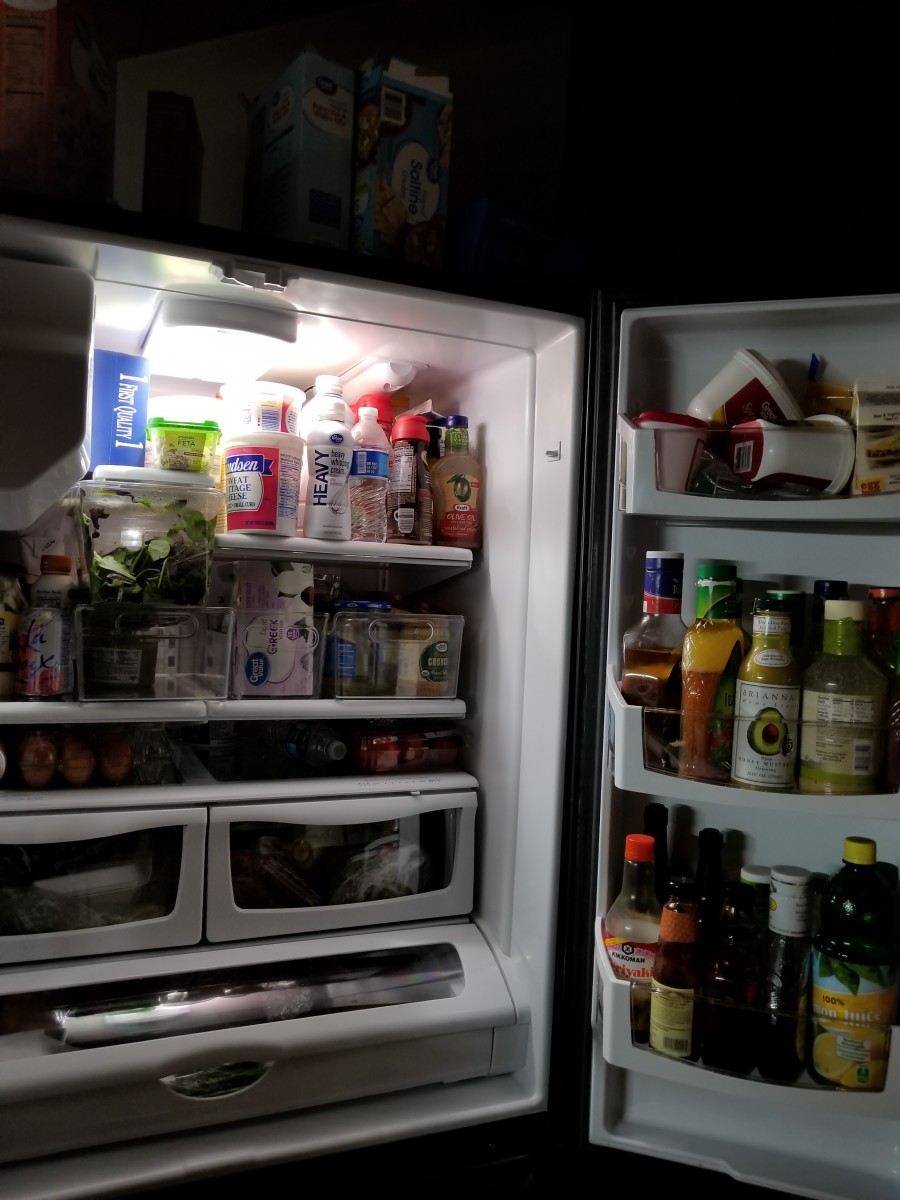Picking a Food Thermometer: Bimetallic, Thermistor, Thermocouple, Infrared
Instant Read Thermometers
Do you know if it’s done yet? Most home cooks will check the doneness of meat by visual clues. They’ll examine the color of the meat or if the juices run clear. Unfortunately, neither the absence of blood nor presence of clear juices are reliable measures of how well cooked meat is. The only completely reliable method for measuring doneness is to check its temperature. Food thermometers are common in most Thanksgiving kitchens - turkeys are too large and variable to estimate easily, but often those thermometers go back in a drawer before black Friday shopping begins and are not seen again until next year.
With large roasts and at special cooking occasions like Thanksgiving, food thermometers are indispensable; otherwise they are seldom seen except in the hands of chefs. Food professionals use them to gage doneness and for food safety. Home cooks rarely consider how the precision of a good instant read thermometer can improve food quality on a regular basis, and because most food borne illnesses require a few days incubation period, they seldom link the cause of a bout of abdominal cramping or diarrhea to undercooked foods.
More than 76 million cases of food borne illnesses occur in the U.S. each year (U.S. Department of Agriculture). Most are completely preventable. The major causes are: unclean hands, failure to separate raw and ready-to-eat foods, improper chilling and inadequate cooking. Simple hand washing, quick refrigeration and separation require only care and diligence, but to accurately cook food one needs a food thermometer.
What Kind of Food Thermometer is Best?
Not all food thermometers are created equal. Home cooks often use the term “instant read thermometer” to refer to any food thermometer, but of the three main types of food thermometers, some will return an accurate reading within 2-5 seconds, whereas others may take over one minute. Another issue to look at when considering food thermometers is whether or not it can be calibrated.
Types of Food Thermometers
Bimetallic Coil Thermometers ($7 - $25)
The most common and typically least expensive food thermometer is the bi-metallic coil thermometer. These thermometers have dial displays and a coil in the probe. The coil is composed of two different metals bonded together that expand at different rates. As the bi-metallic coil expands and contracts, the dial moves. These thermometers, while inexpensive, have a number of drawbacks. Because the coil is generally two to two and a half inches, to get an accurate reading the probe must be two to two and a half inches within the food being measured. This can be tricky for thin items such as hamburger patties or round foods with a small diameter. A second major problem is that these thermometers are the slowest of the three major types. While some bimetallic coil thermometers identified as “instant read” may provide results in 15 to 20 seconds, others may take longer than one minute to reach a stable temperature. Often these cannot be calibrated.

Thermistor Thermometers ($12 - $50)
The word “thermistor” is a combination of “therm” and “resistor”, and a thermistor is indeed a resistor that responds to temperature. Unlike the bimetallic coil thermometer, a thermistor-style thermometer’s sensor is located in the tip of the probe and is much smaller (approx. 1/8 of an inch) so it is well-suited to measuring thin or thick foods. Thermistors are also much faster than bimetallic coil thermometers in reaching an accurate temperature, often within 10 seconds. These may or may not be capable of being calibrated depending on the model.

Thermocouple Thermometers ($35 – $100+)
The fastest and most expensive of the three major types of food thermometers is the thermocouple. A thermocouple measures the temperature difference between two fine wires at the tip of the probe. Because a thermocouple responds within two to five seconds, it is easy to quickly take multiple readings quickly and return an item to the oven without it beginning to cool. Like thermistors, the thin probe area at the tip allows for easy measurement of thin or thick foods. Thermocouple thermometers can be calibrated.
Infrared Thermometers ($70 - $200+)
The newest type of food thermometer is the hand-held infrared thermometer. These tend to be even more expensive than thermocouple, but they are literally, instant read thermometers. Their use, however, is limited by the fact that they cannot offer accurate internal readings of food. They are ideal for confirming the temperature of shipments that are temperature sensitive, finding the surface temperature of delicate foods without contact, and checking grill temperatures. They have not been widely adopted by cooks, though they are commonly seen in grocery stores and food manufacturing facilities.
How to Use Any Food Thermometer
No matter what type of food thermometer you use, a few general principles apply to their use:
- Before inserting a probe in foods, clean the thermometer. There’s no use trying to cook out food borne pathogens if you are re-introducing or cross-contaminating each time you insert your device.
- Check the temperature at the thickest point in roasts, casseroles or other dishes, but be sure not to allow the probe to touch bone, the cooking pan or go through to the other side.
- Be aware of how your device works. For example, bimetallic coil type thermometers take longer and must be inserted at least two inches to get an accurate reading. Infrared thermometers cannot measure the internal temperature of foods.
- Learn the safe temperature charts the USDA or your state department of health uses. Especially recognize that meats that have been ground, tenderized or boned should be cooked to 160°, and all poultry to 165°.
- Calibrate frequently. Accuracy is the point of measurement.
Although most home cooks associate food thermometers only with cooking turkey at Thanksgiving or with food professionals, perhaps their greatest gift is the confidence they bestow. Their regular use can guarantee hot foods are truly hot. They help ensure meats are tender, and that there are fewer instances of throwing chickens back in the oven because they’re too pink.






